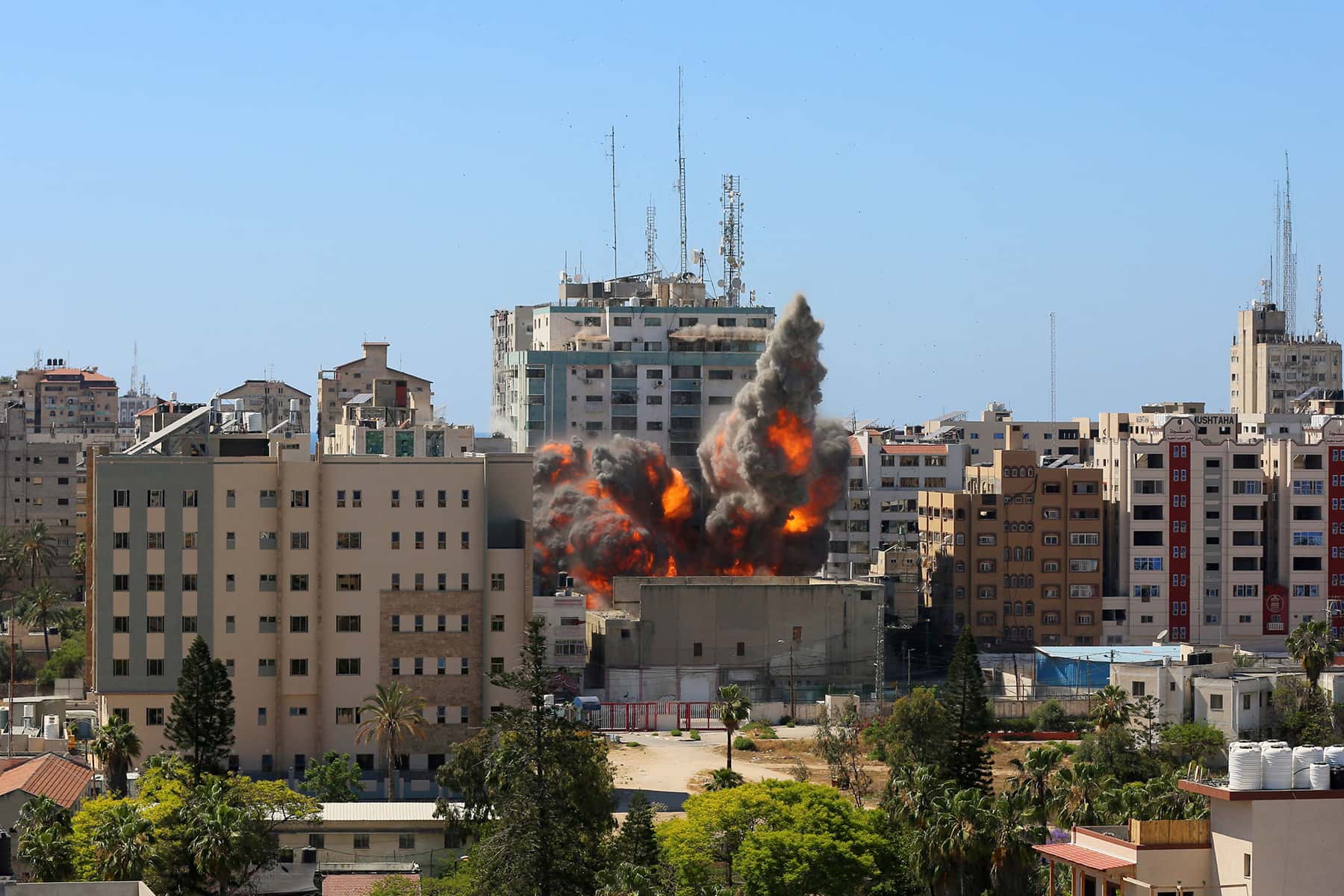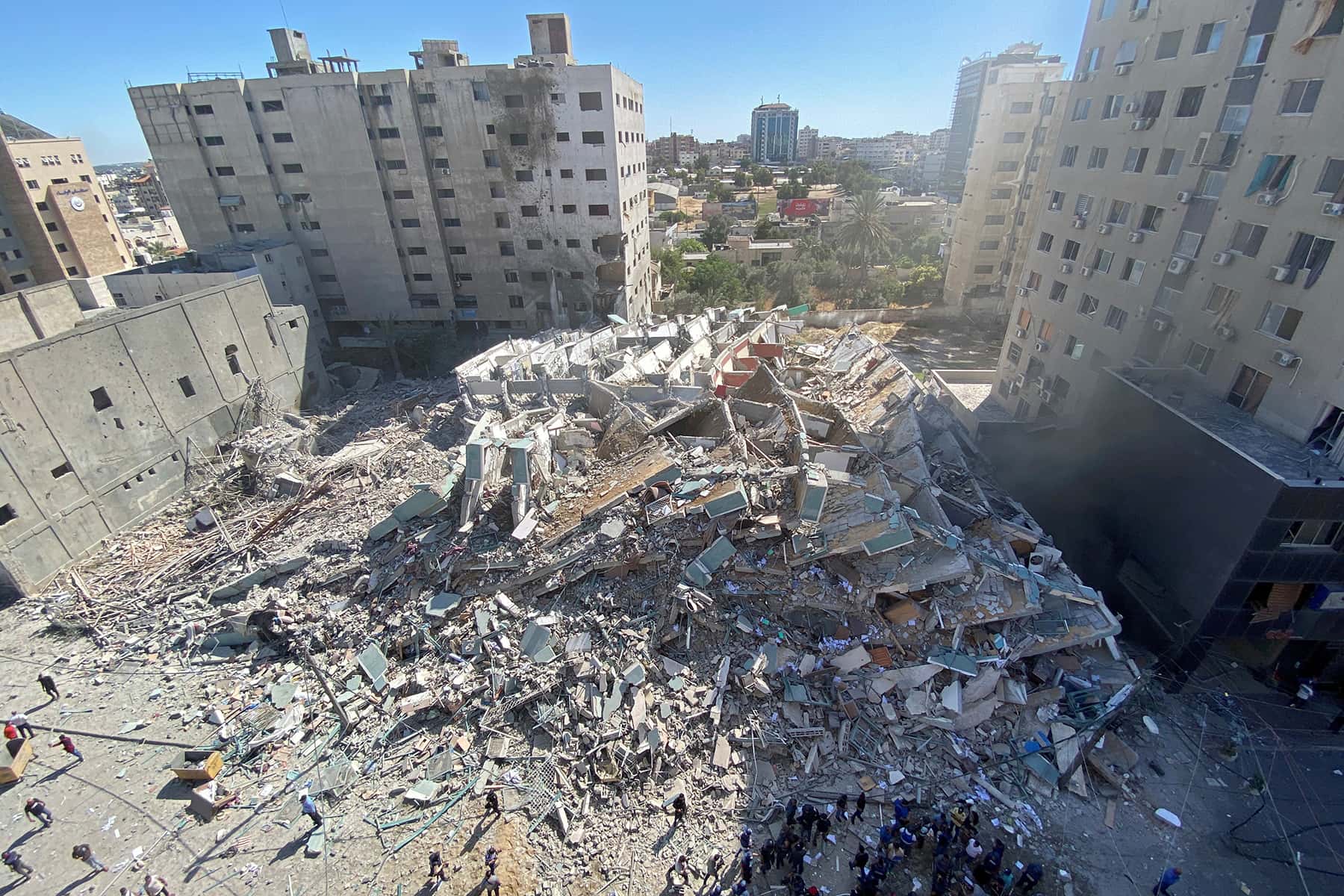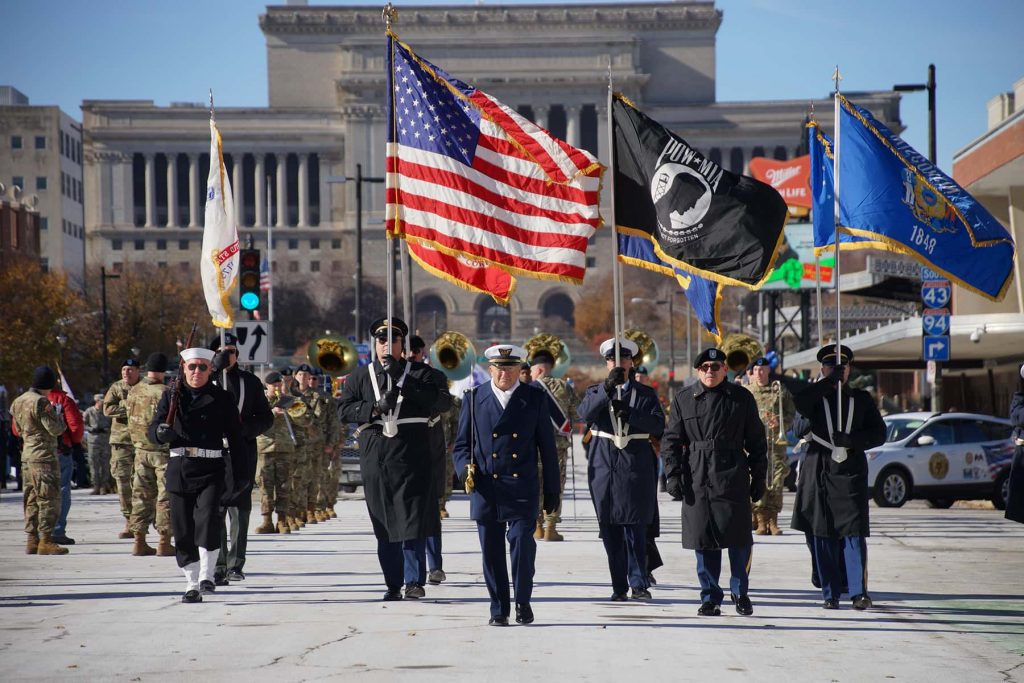
The Israeli air force has destroyed a tower block in Gaza City housing the offices of the Associated Press and Al Jazeera in what has widely been decried as an attack on press freedom.
The airstrikes on May 15 – the sixth consecutive day of hostilities between Israel and Hamas – came roughly an hour after the Israeli military ordered people to evacuate al-Jalaa tower. There was no immediate explanation beforehand for why the 15-story building was targeted. As well as the two international media organisations, the high-rise was home to several other media outlets, offices including several internet providers, and private apartments.
The building was hit approximately six times before collapsing in plumes of black smoke, which engulfed the entire neighborhood.
Al Jazeera broadcasted live a phone call between the building’s owner, Abu Husam, and an Israeli intelligence officer in which Husam asks the officer to give the media personnel time to evacuate equipment from their offices. His request was denied.
Al Jazeera also broadcast live the destruction of the building: “And the tower has come down,” said the news anchor, Halla Mohieddeen, as the building collapsed. “Whenever you see journalists doing live updates from Gaza, they are usually standing on the roof of that building that has now been flattened in an airstrike by the Israeli military.”
A statement from the Israel Defence Forces said the building had contained military assets belonging to the intelligence offices of Hamas.
“Prior to the strike, the IDF provided advance warning to civilians in the building and allowed sufficient time for them to evacuate the site,” the IDF statement said. “Hamas deliberately places military targets at the heart of densely populated civilian areas in the Gaza Strip.”
Late on May 15, Prime Minister Benjamin Netanyahu said the building was used by Hamas military intelligence. “It was not an innocent building.”
Mostefa Souag, acting director general of Al Jazeera Media Network, described the bombing of the company’s offices as “a blatant violation of human rights” and a war crime, calling on the international community to condemn the attack and “to hold Israel accountable for its deliberate targeting of journalists and the media institutions.”
An AP reporter, Fares Akram, tweeted just before the tower was hit: “We ran down the stairs from the 11th floor and now looking at the building from afar, praying Israeli army would eventually retract.”
Earlier on May 15, Akram published a first-person piece in which he described how an Israeli bomb had destroyed his family’s farm in the northern Gaza Strip the day before. Six of his relatives, including his father, three friends and several colleagues have died in the three wars and other hostilities between Israel and Hamas, he wrote.
“The Associated Press office is the only place in Gaza City I feel somewhat safe. The Israeli military has the coordinates of the high-rise, so it’s less likely a bomb will bring it crashing down,” said Akram. “But on a deeper level, it’s speaking to people in Gaza, working to get their voices out of a territory they themselves cannot leave, that keeps me sane. When I tell the world what’s happening here, I find some small solace.”
Associated Press’s president and chief executive, Gary Pruitt, released condemning the action and demanding answers.
“We are shocked and horrified that the Israeli military would target and destroy the building housing AP’s bureau and other news organizations in Gaza. They have long known the location of our bureau and knew journalists were there. We received a warning that the building would be hit. The Israeli government says the building contained Hamas military intelligence assets. We have called on the Israeli government to put forward the evidence. AP’s bureau has been in this building for 15 years. We have had no indication Hamas was in the building or active in the building. This is something we actively check to the best of our ability. We would never knowingly put our journalists at risk. We are seeking information from the Israeli government and are engaged with the U.S. State Department to try to learn more. This is an incredibly disturbing development. We narrowly avoided a terrible loss of life. A dozen AP journalists and freelancers were inside the building and thankfully we were able to evacuate them in time. The world will know less about what is happening in Gaza because of what happened today.”
The current hostilities between militants in the Gaza Strip and Israel are the worst clashes since the 2014 war. Several reports, citing Egyptian mediation sources, said that on Thursday night Israel rejected a ceasefire proposal that Hamas, the Islamic group which controls the area, had agreed to.
Since May 10, Hamas has fired hundreds of rockets into Israel, which has pounded the Gaza Strip with strikes. In Gaza, at least 139 people have been killed, including 39 children and 22 women; in Israel, seven people have been killed, including a six-year-old boy and a soldier.
Bеthаn McKеrnаn
Аshrаf Аbu Аmrаh and Mоhаmmеd Sаlеm / Rеutеrs
Portions originally published on The Guardian as Israeli strike destroys Gaza tower housing media organisations
Help deliver the independent journalism that the world needs, make a contribution of support to The Guardian.















